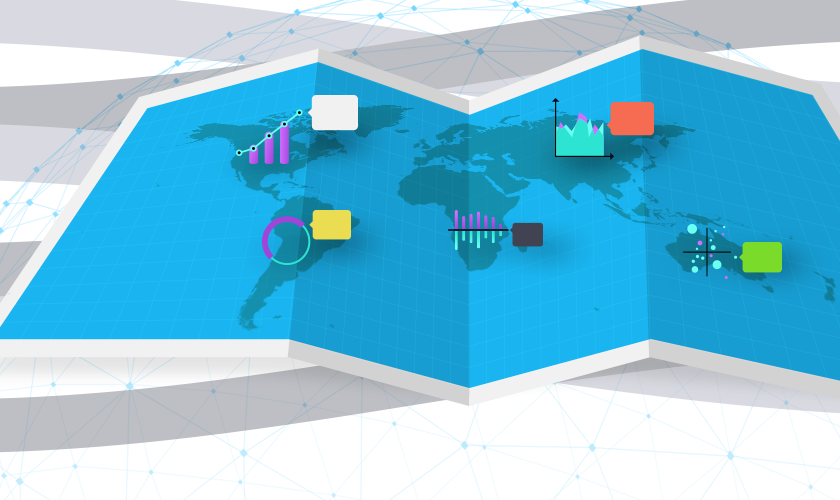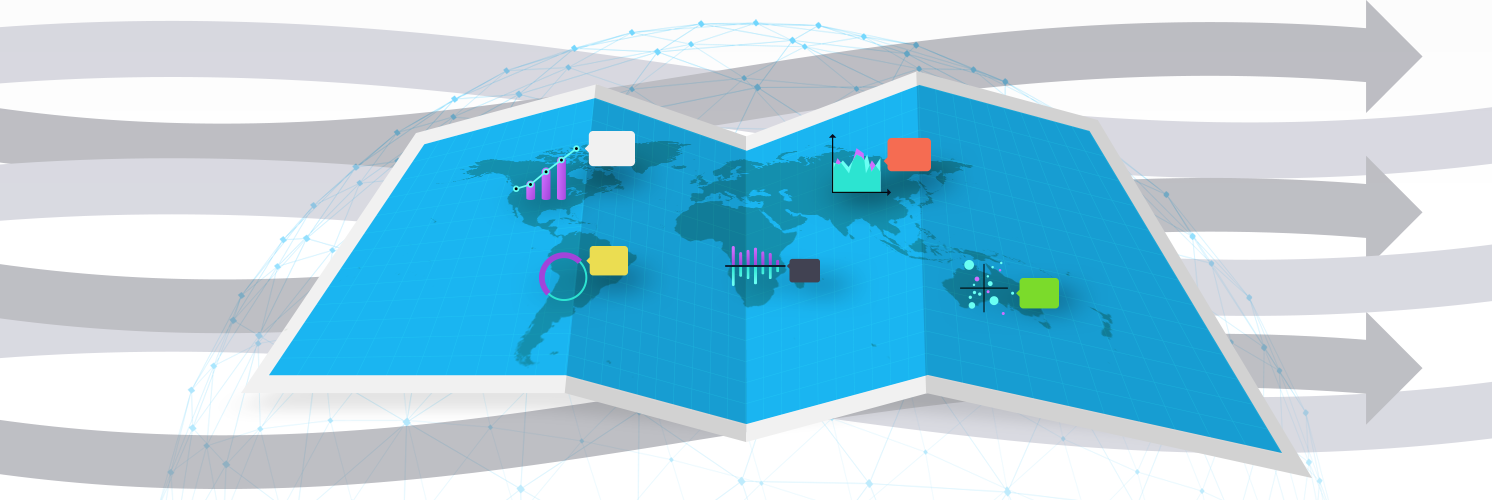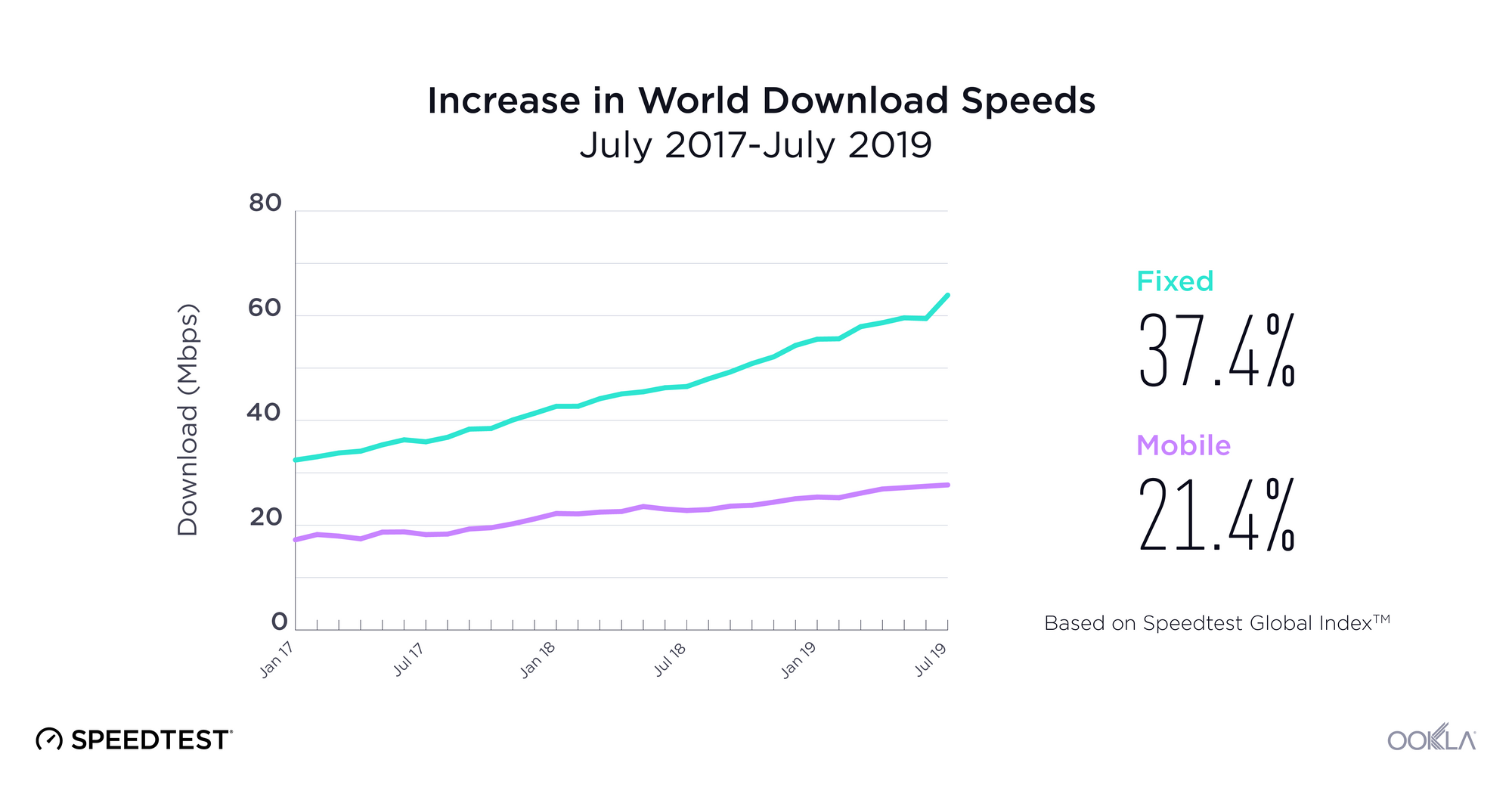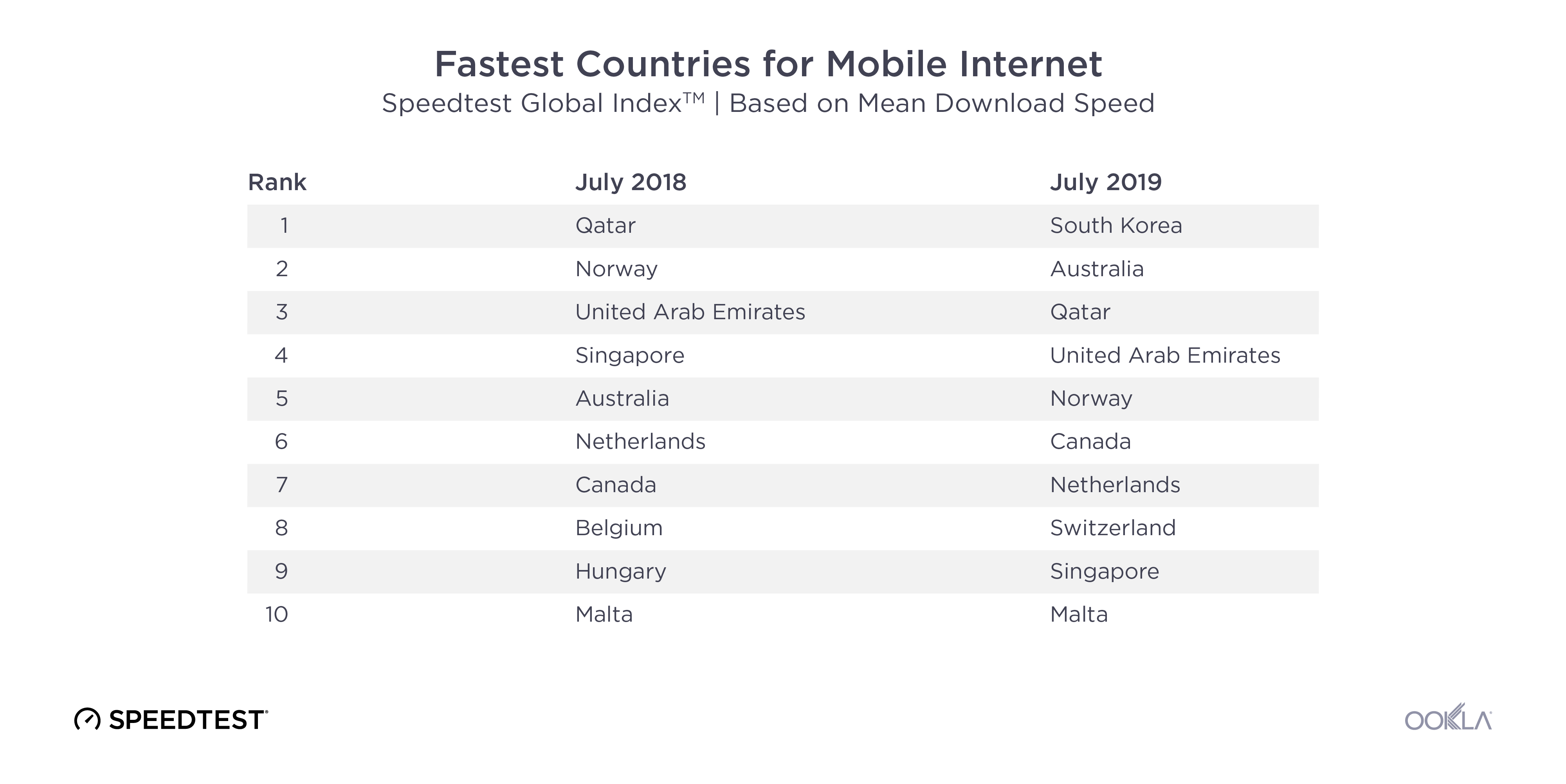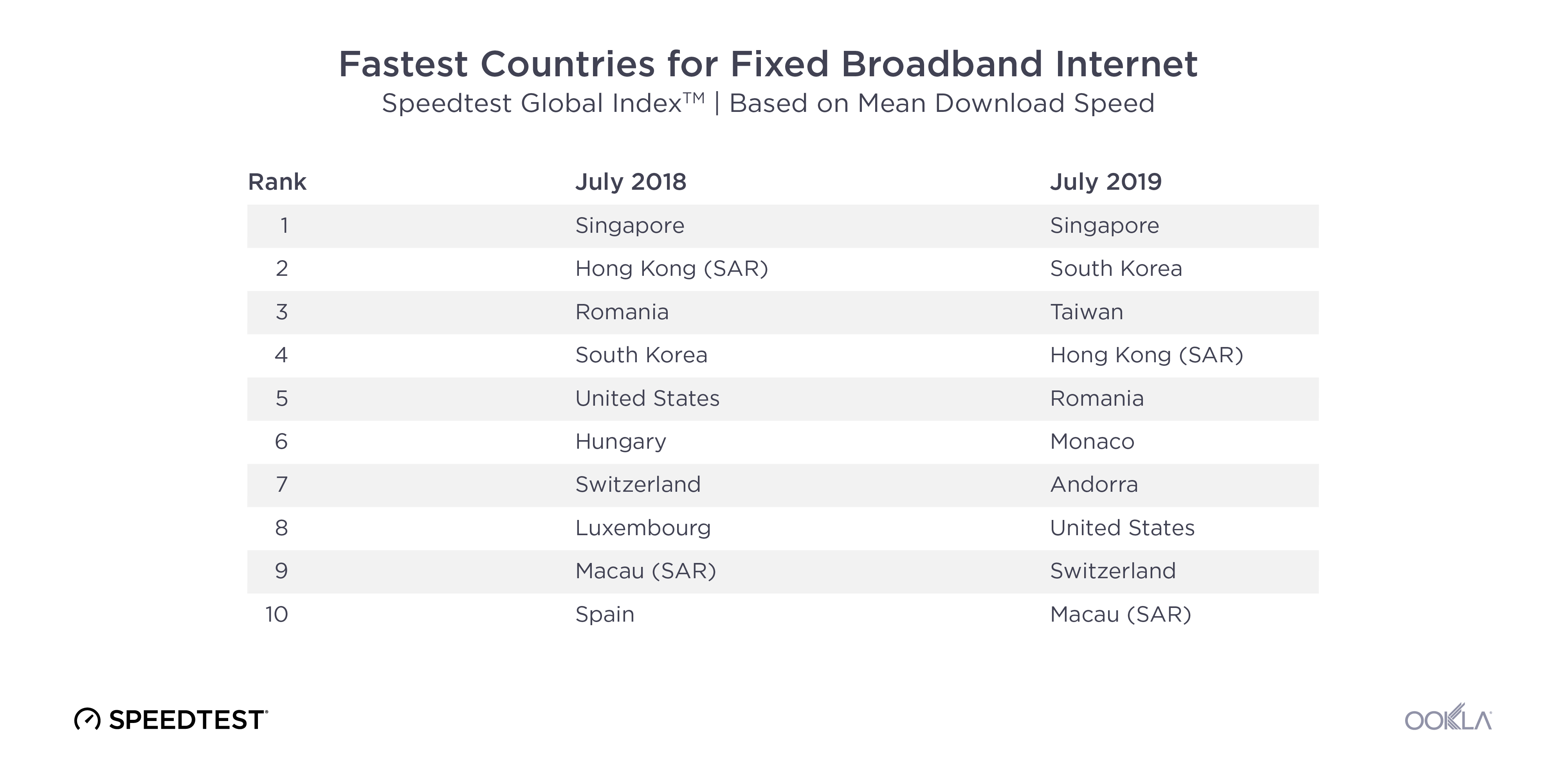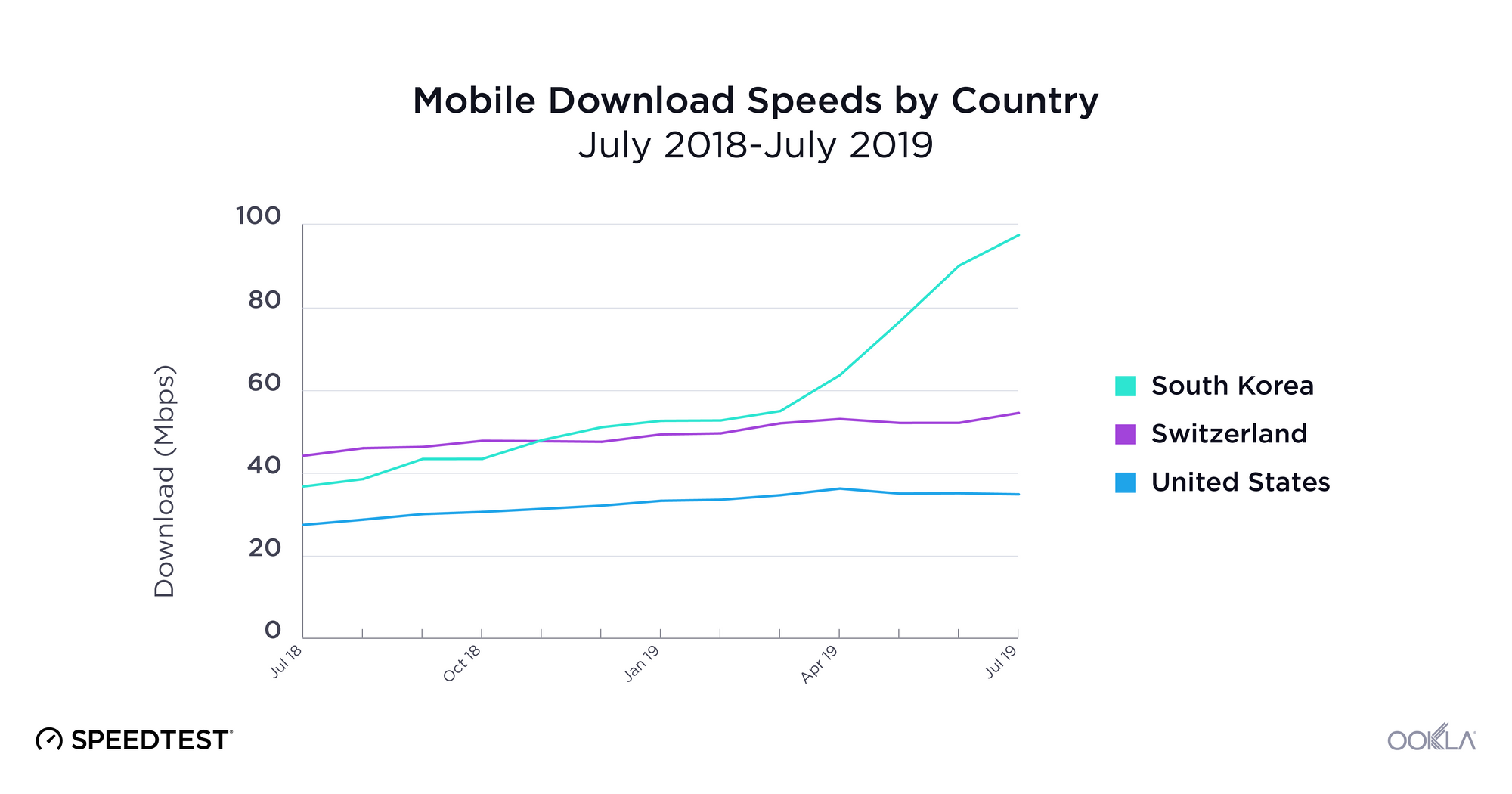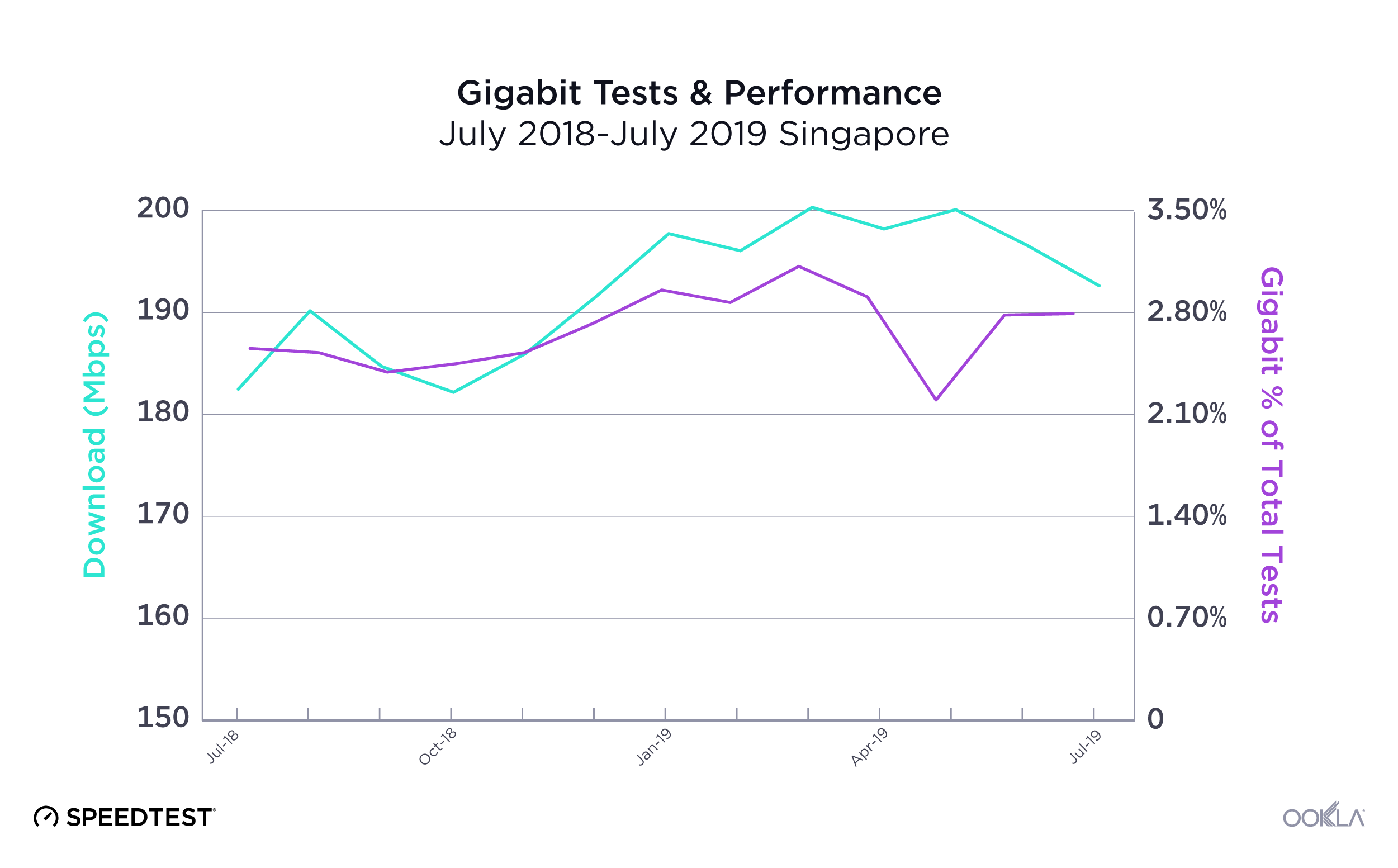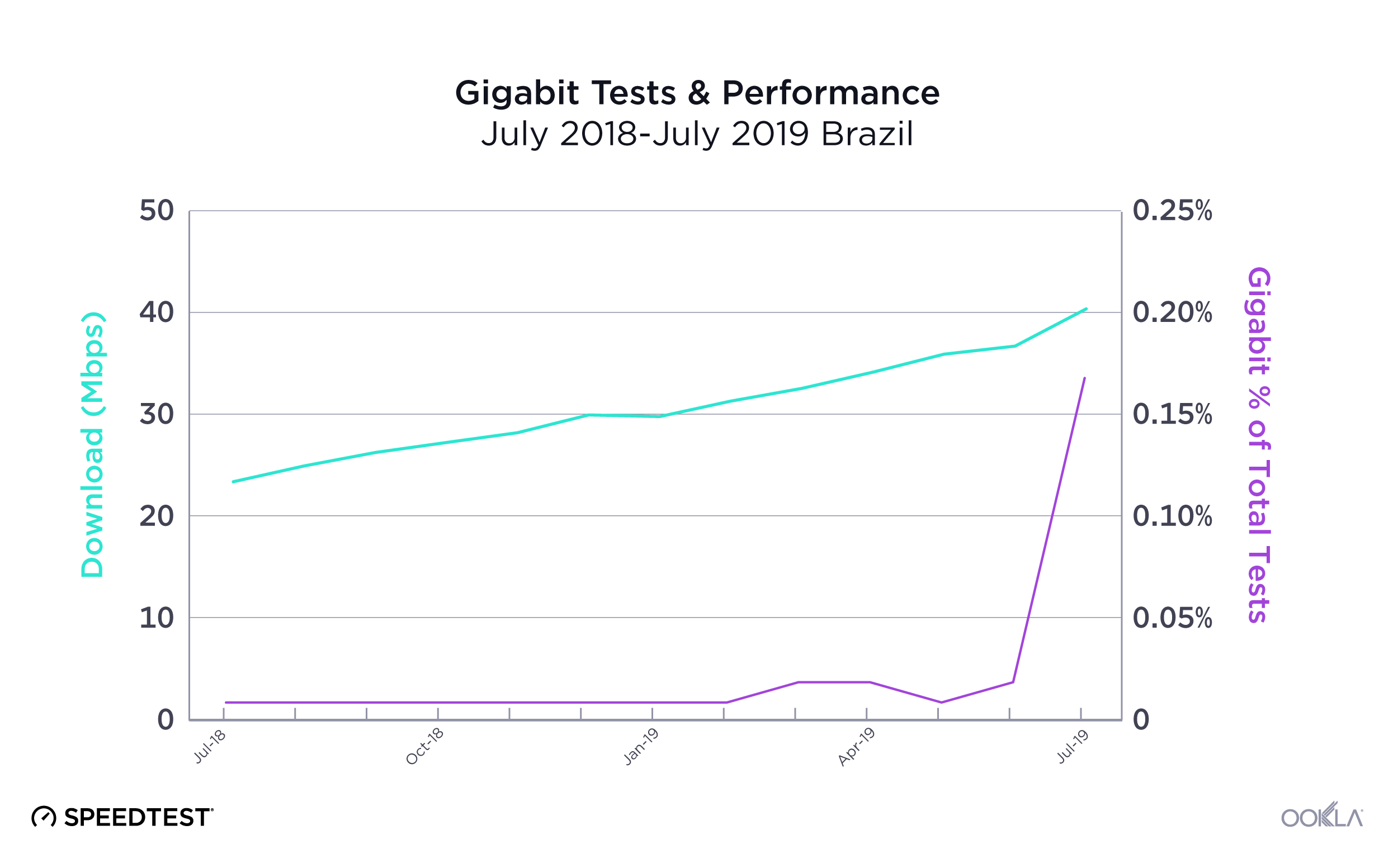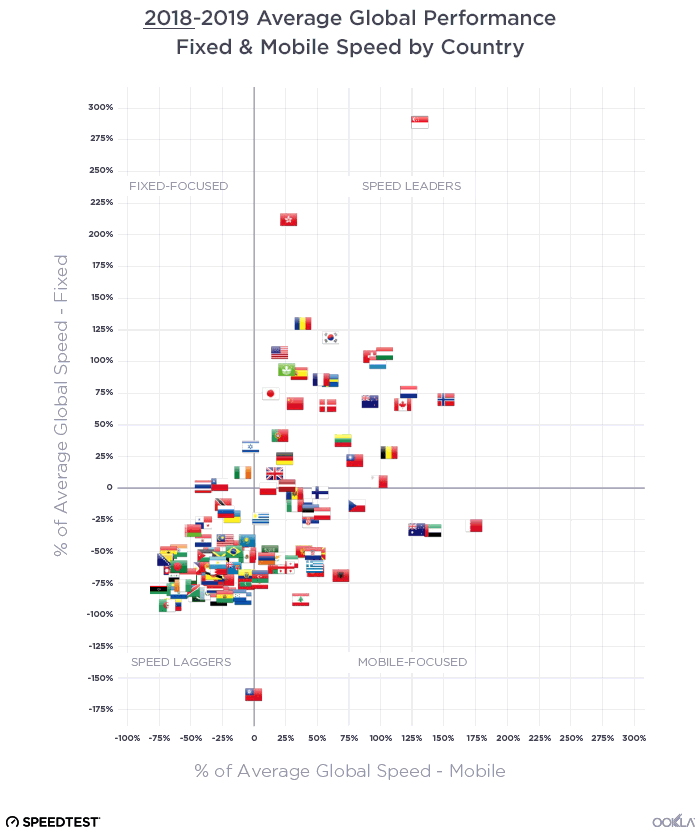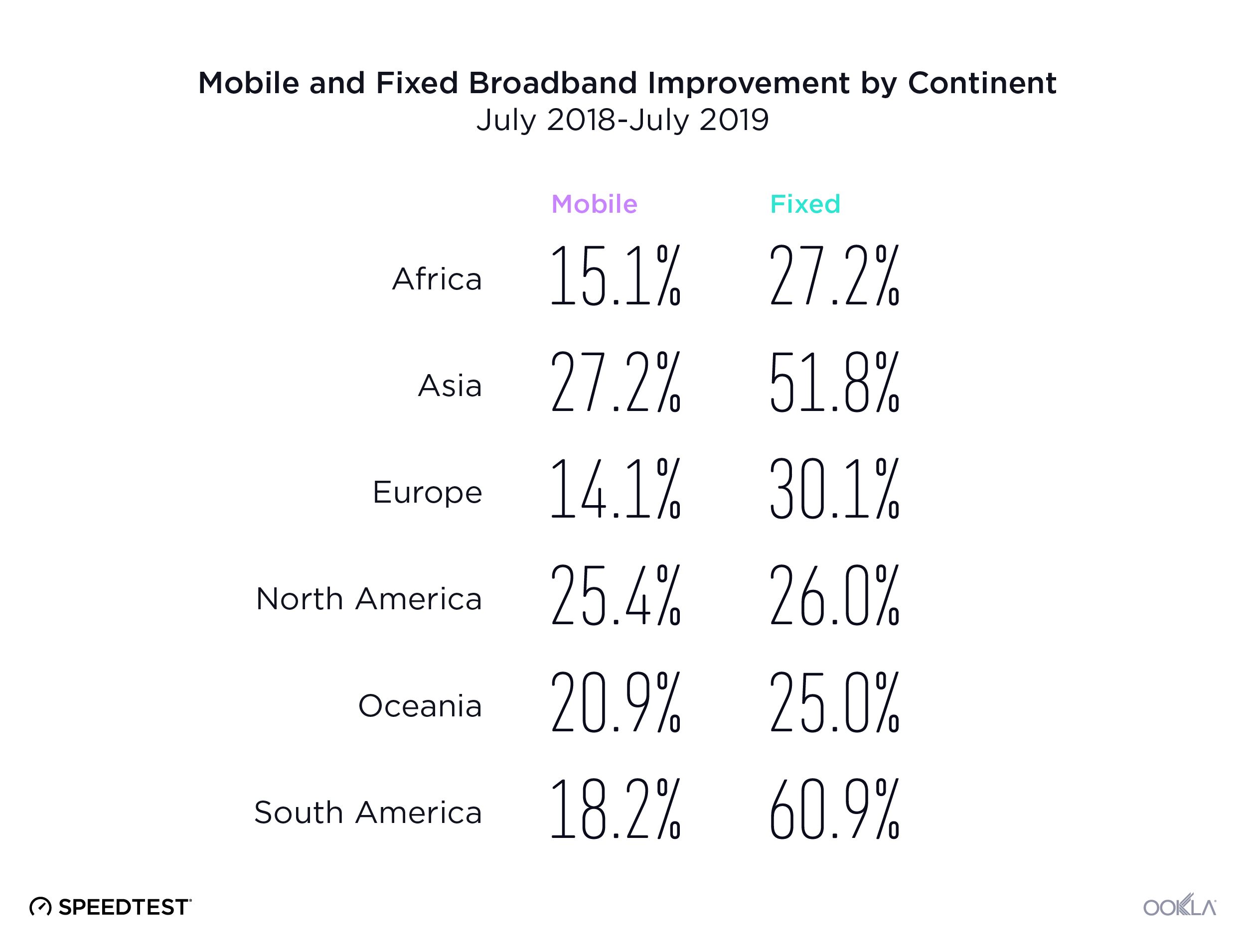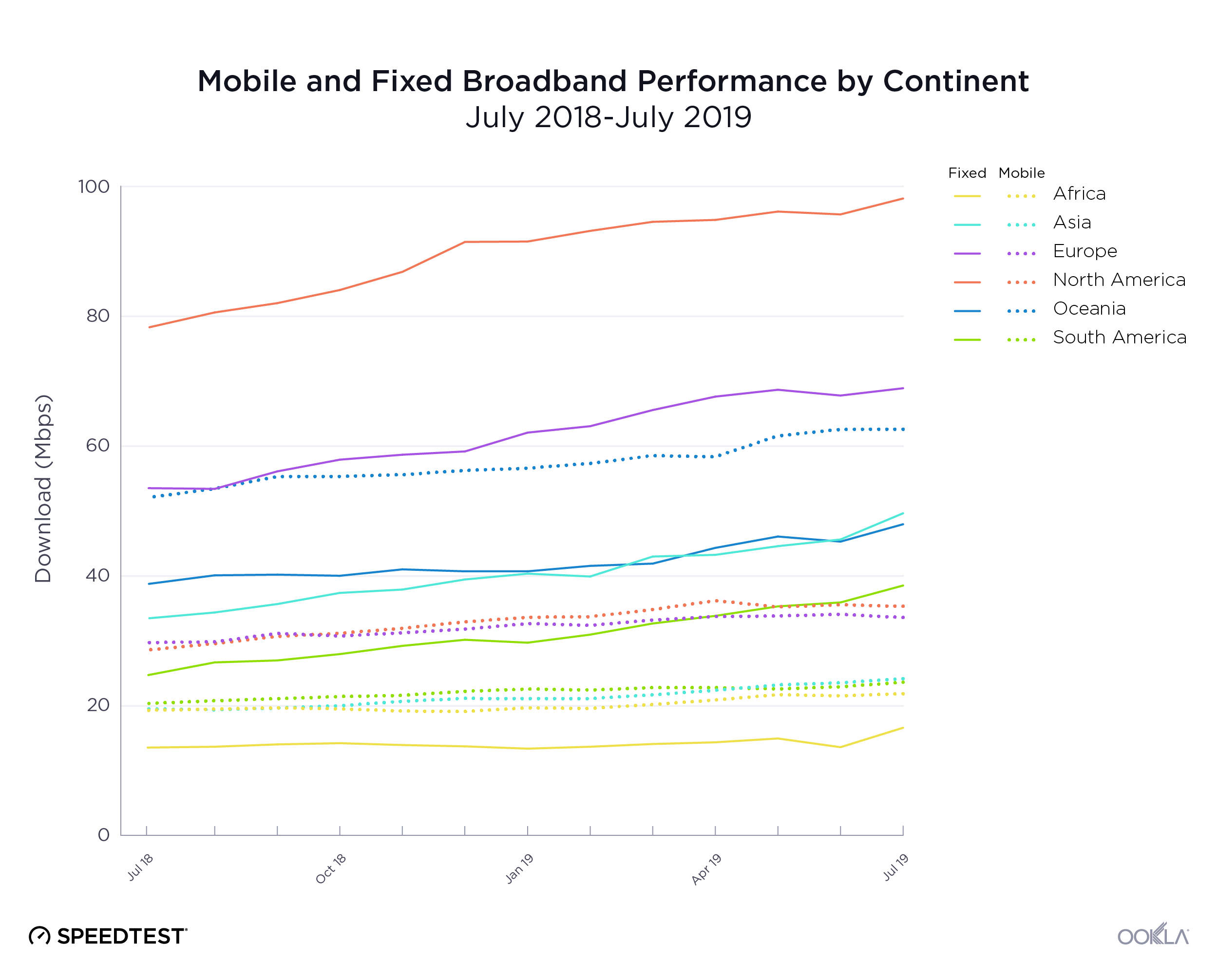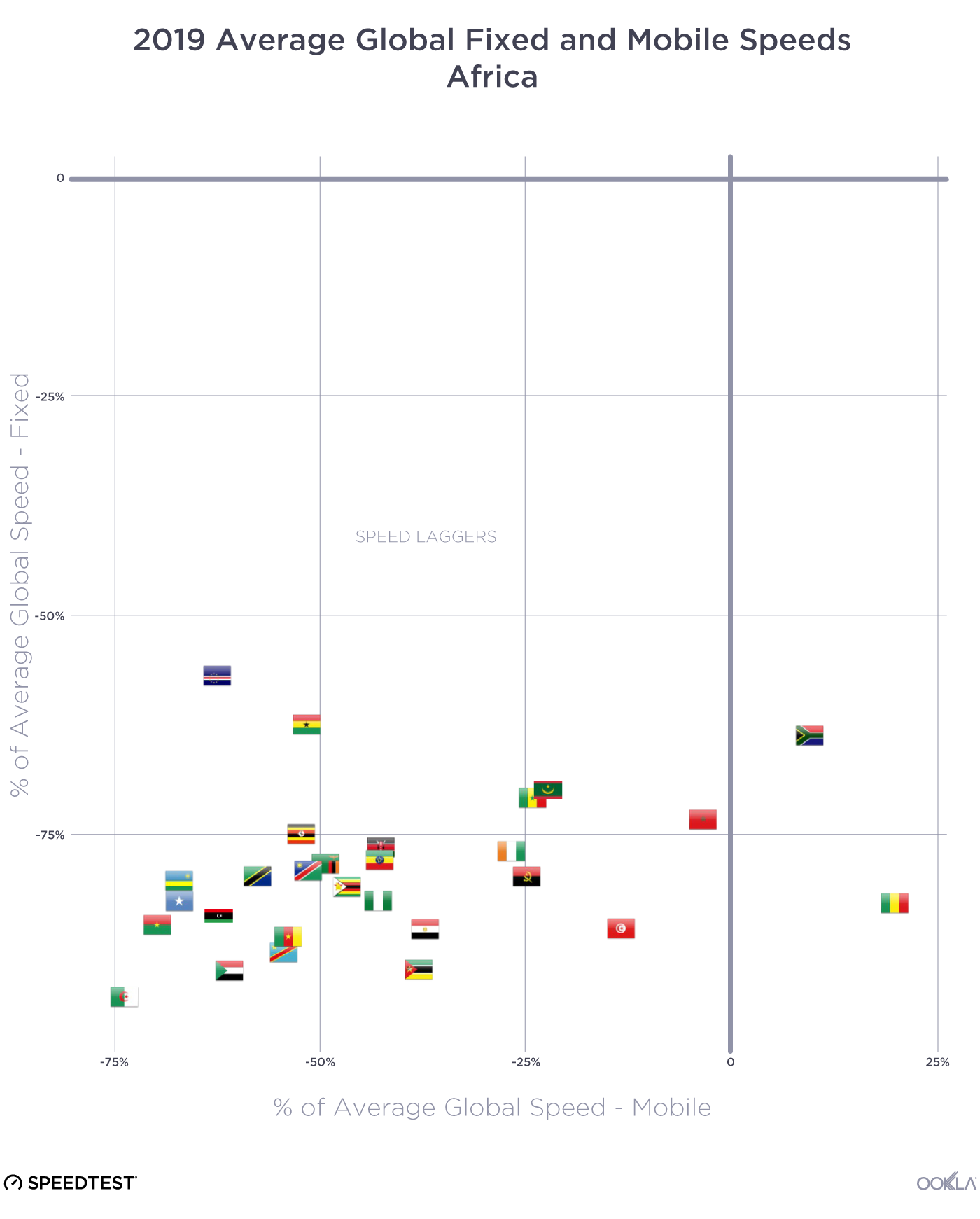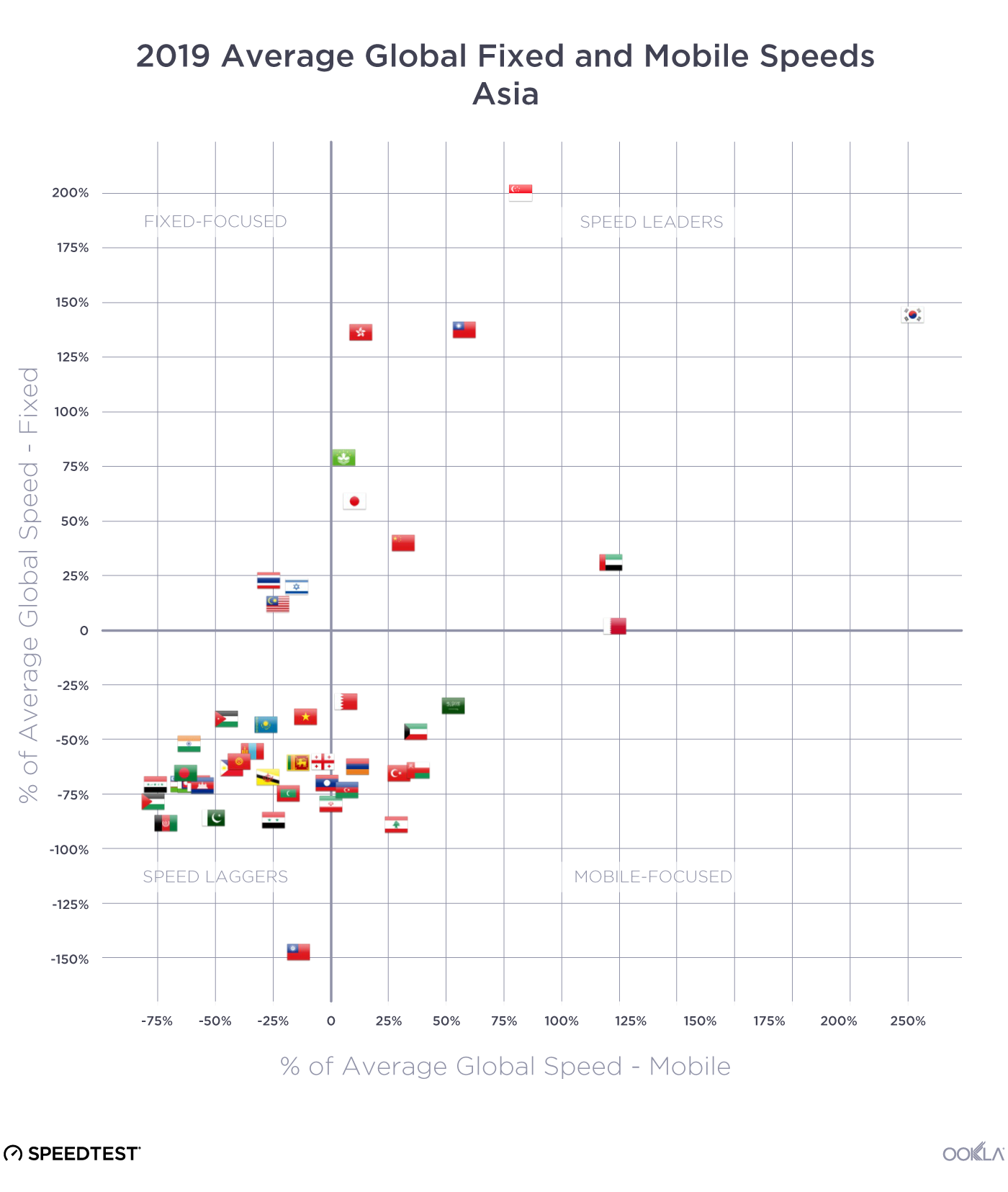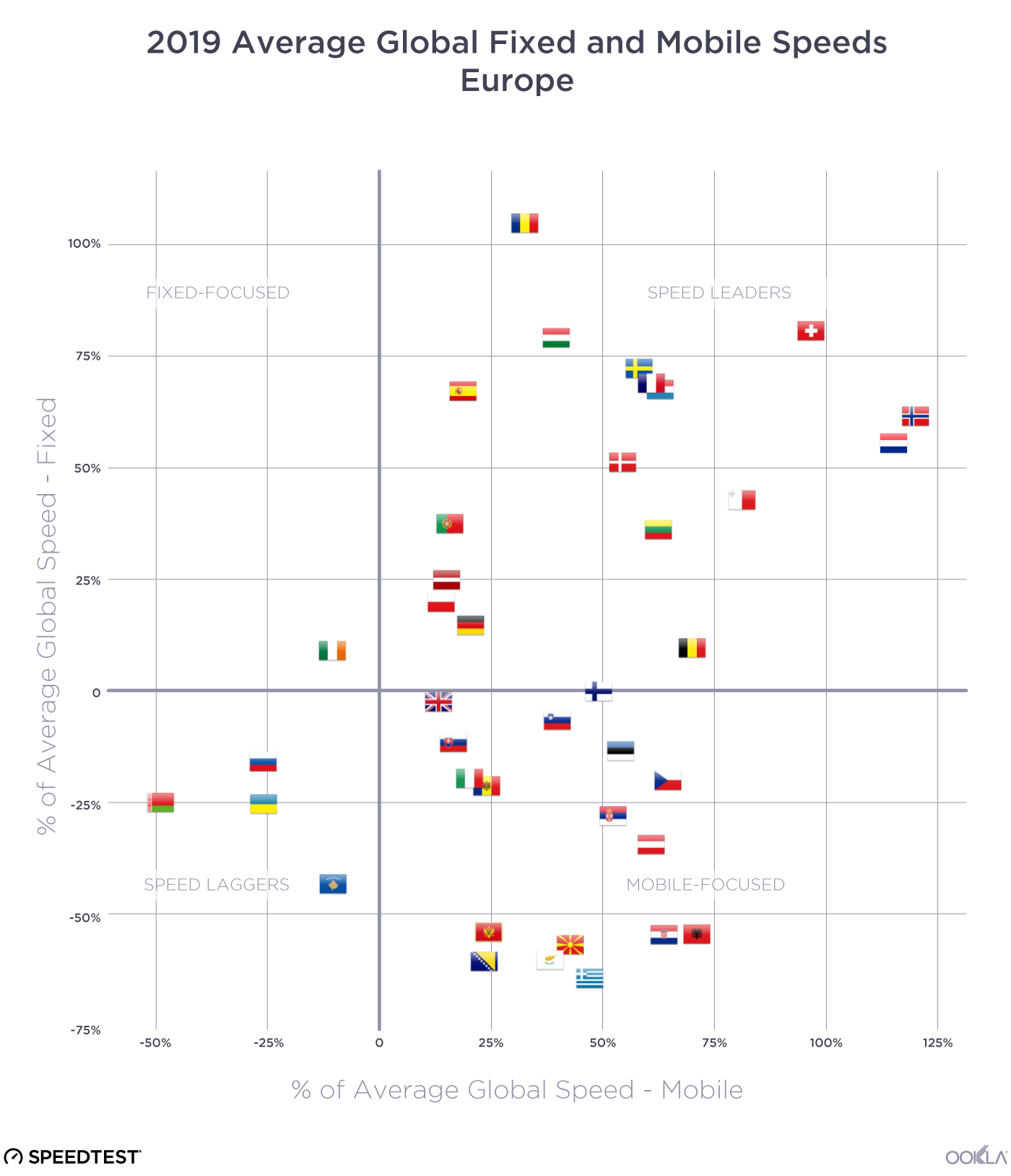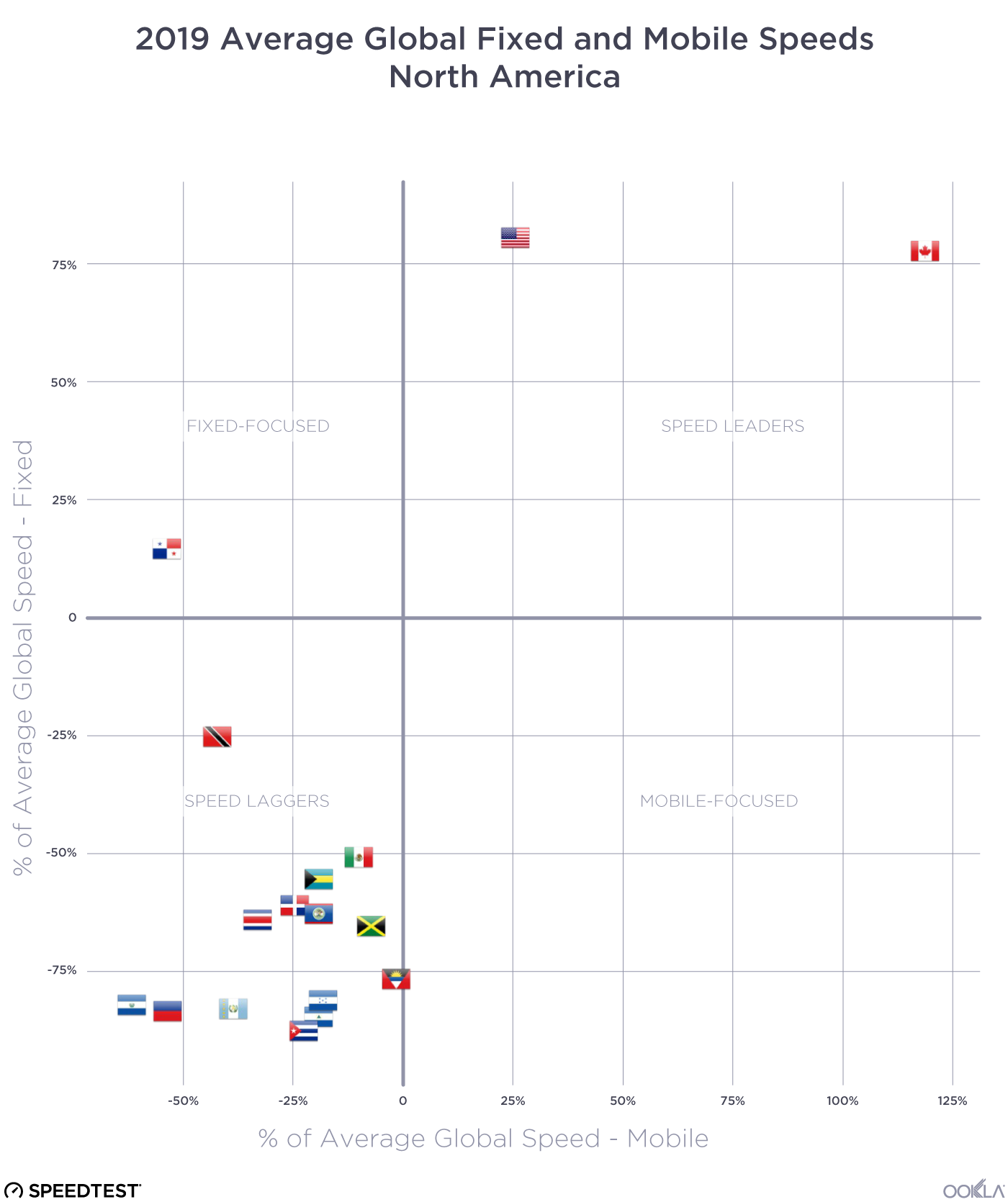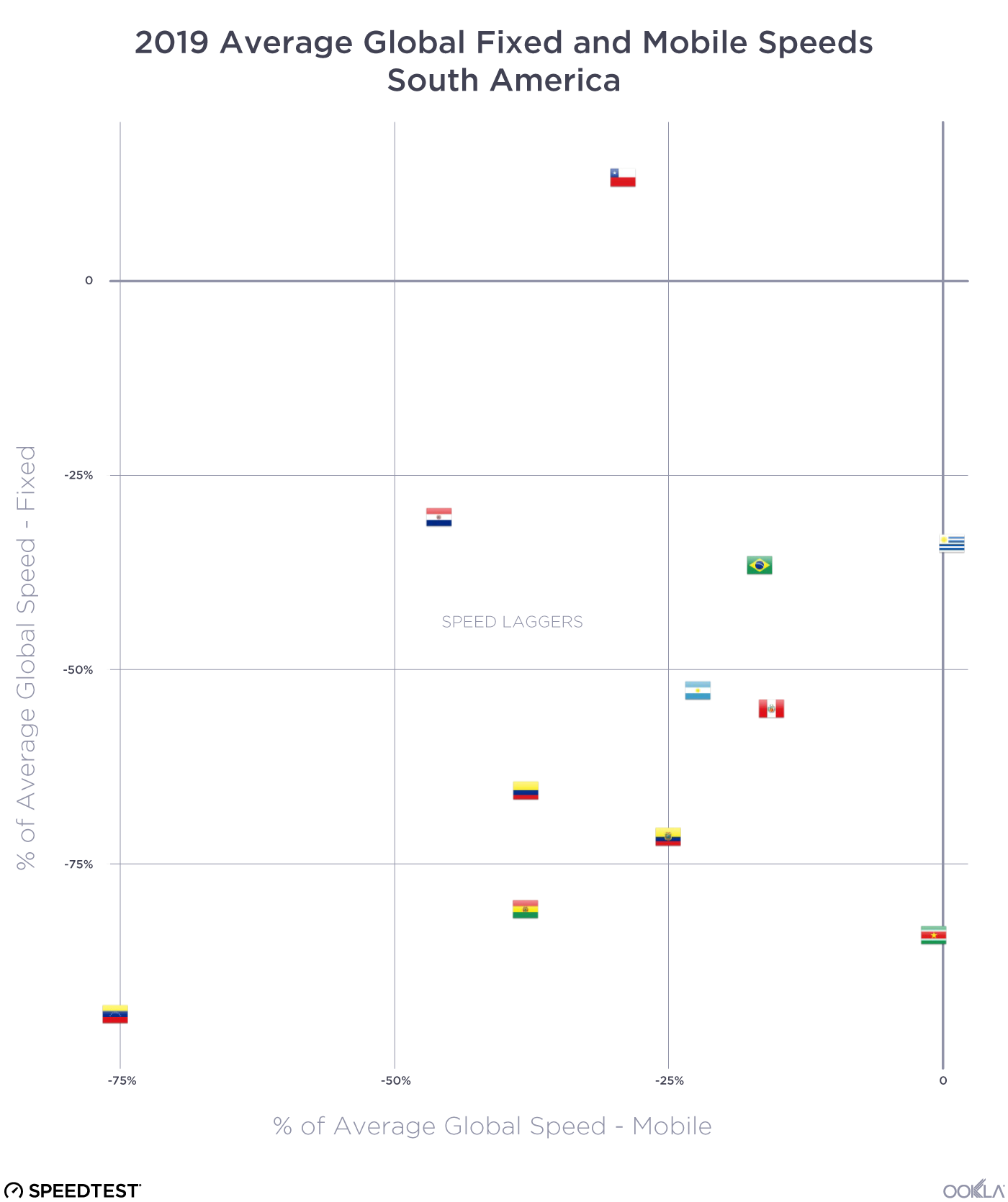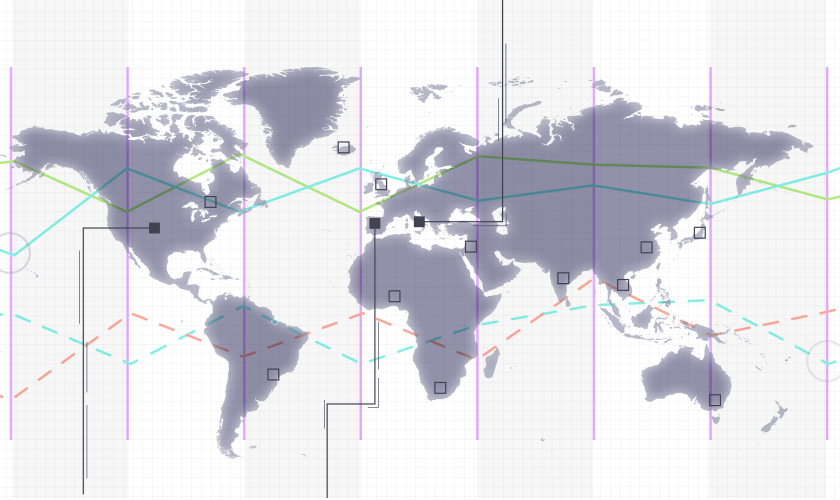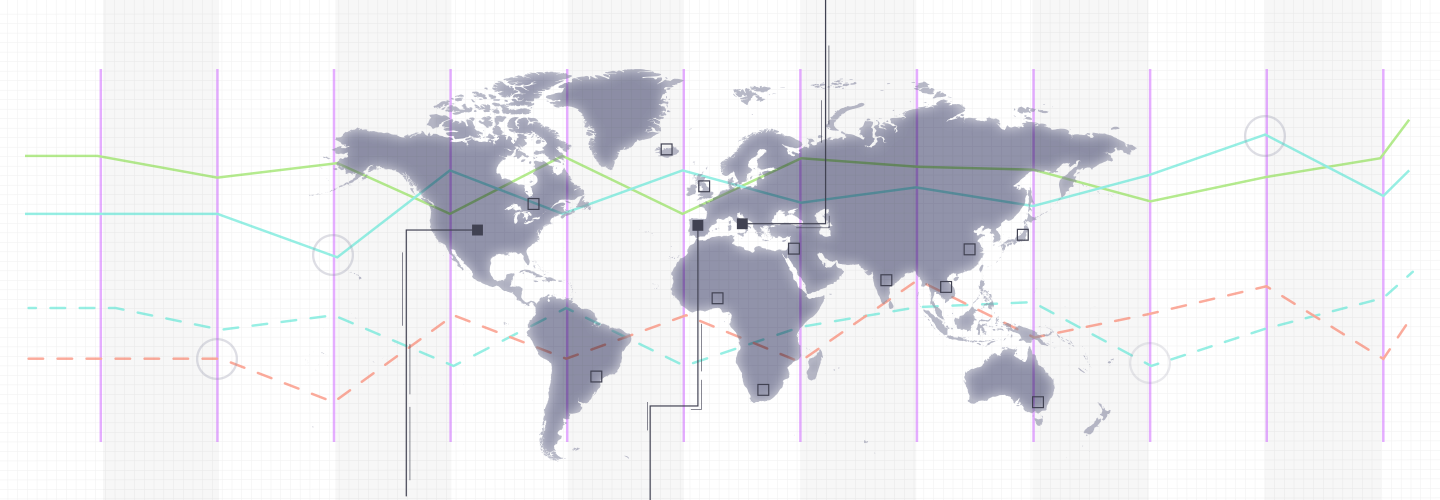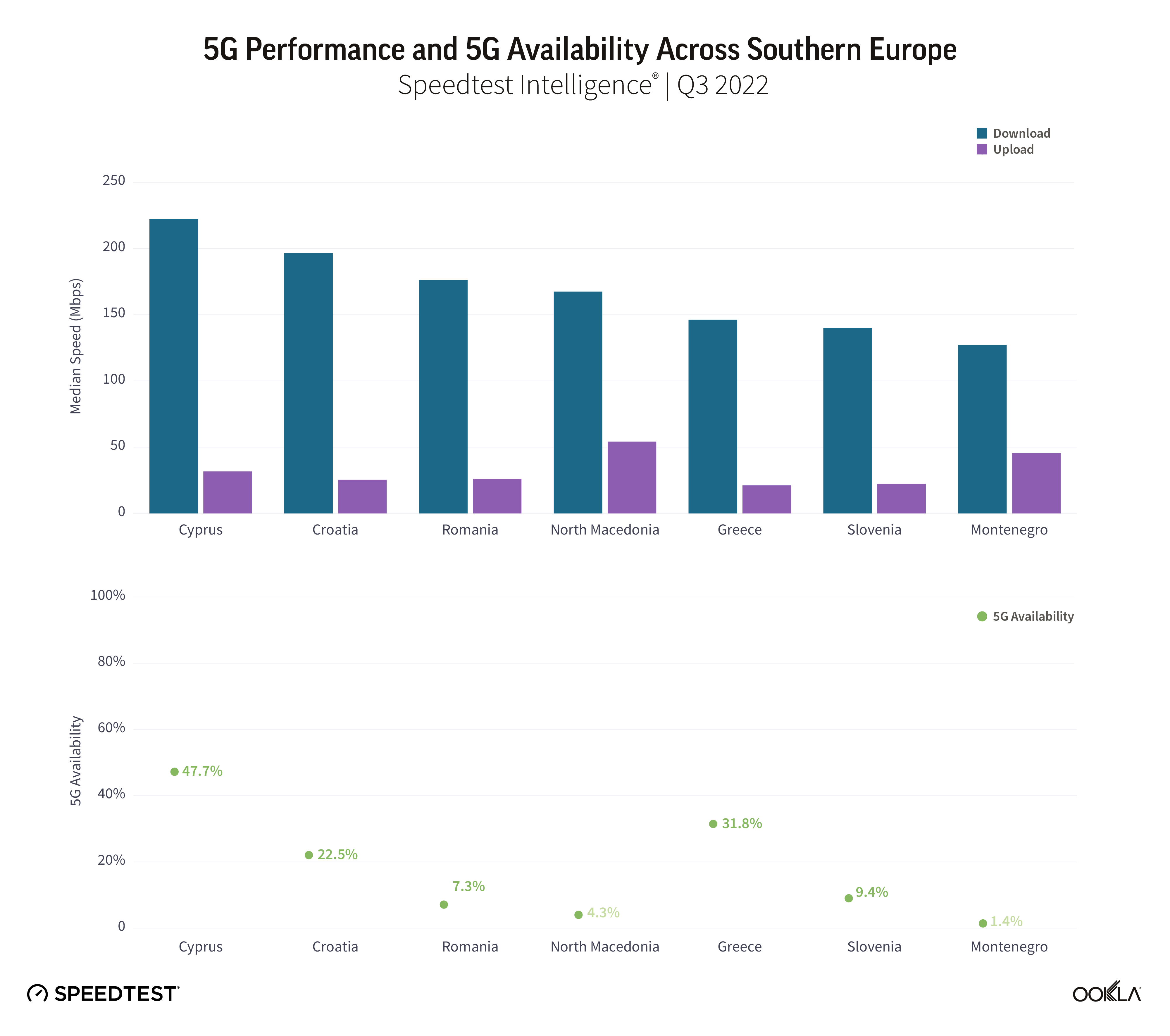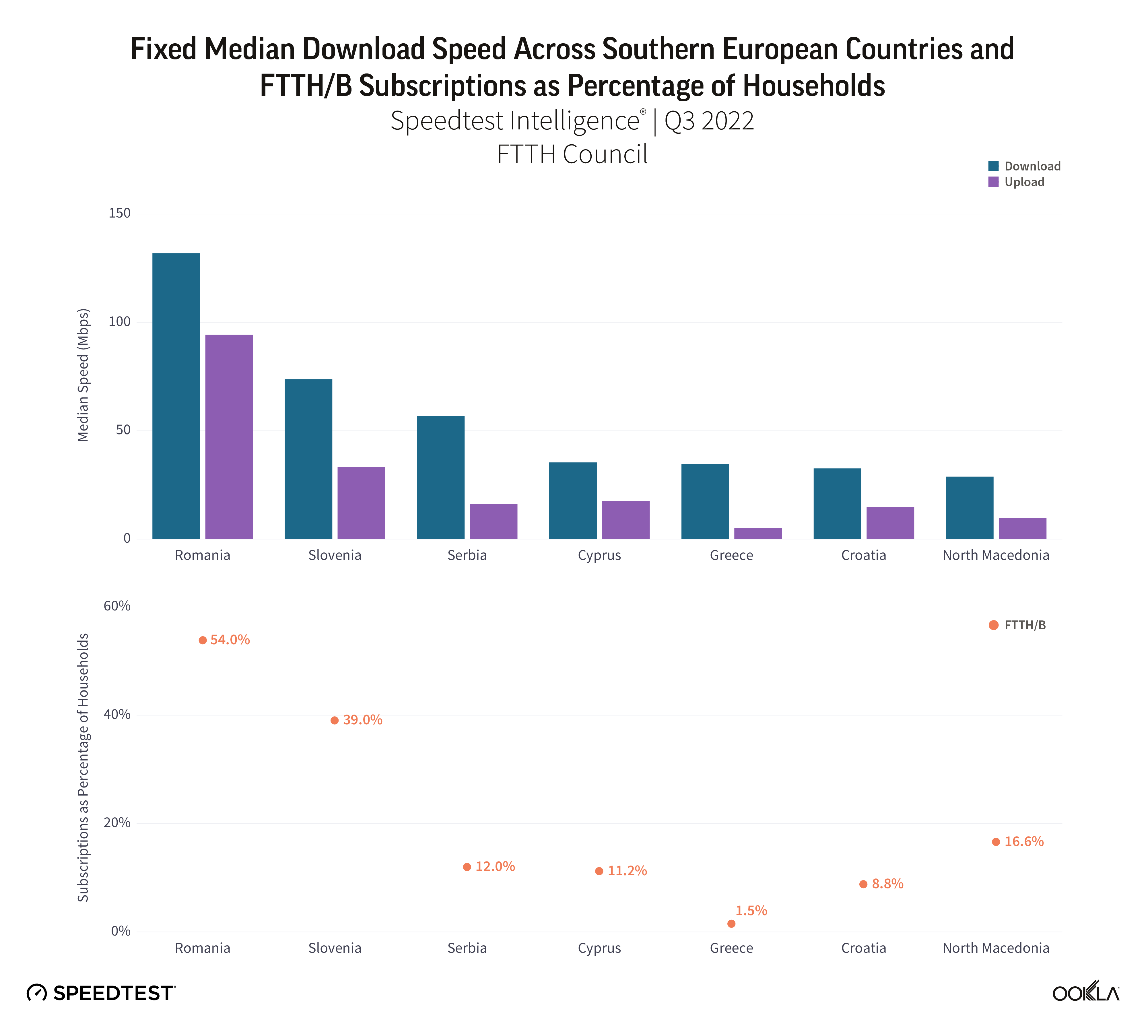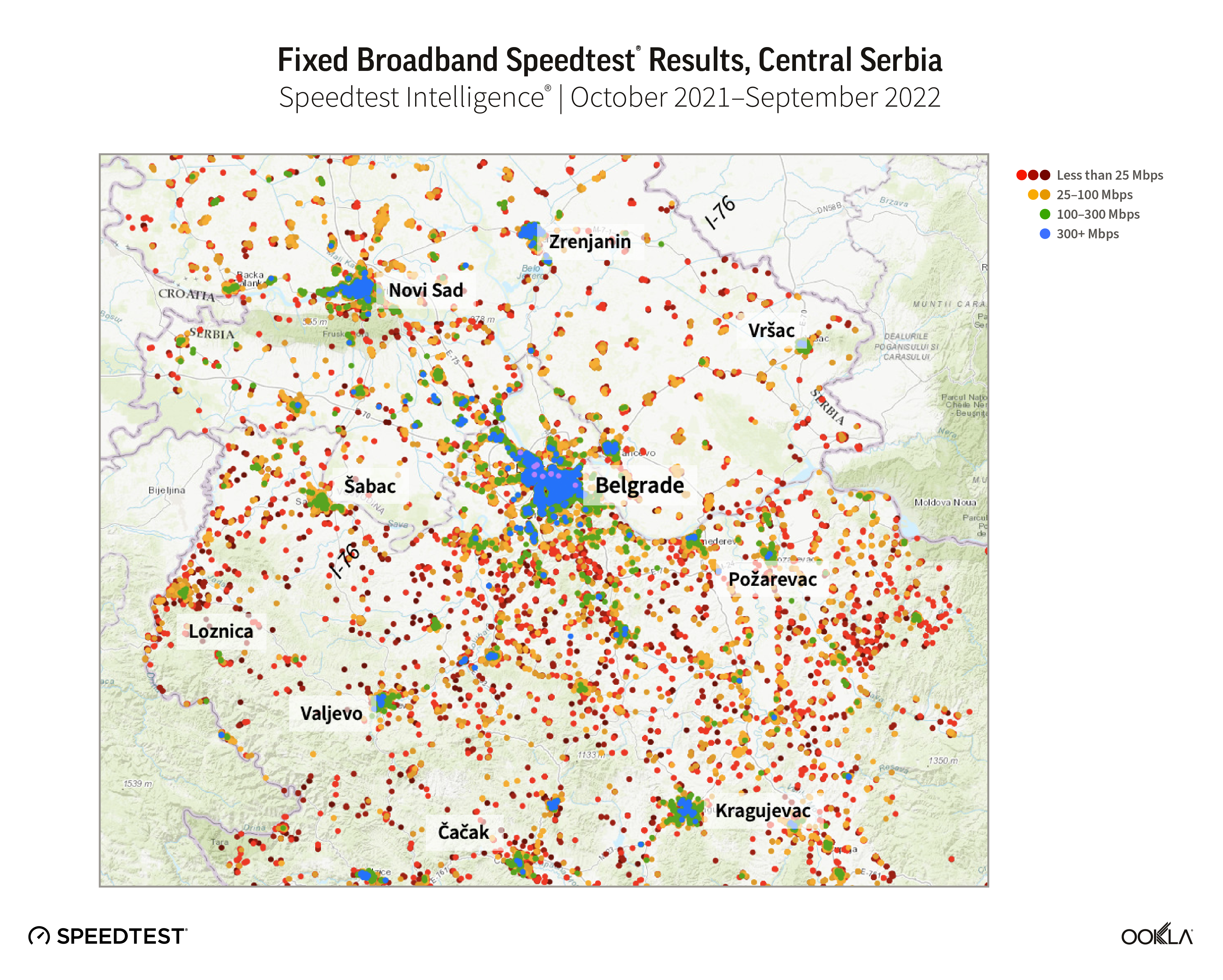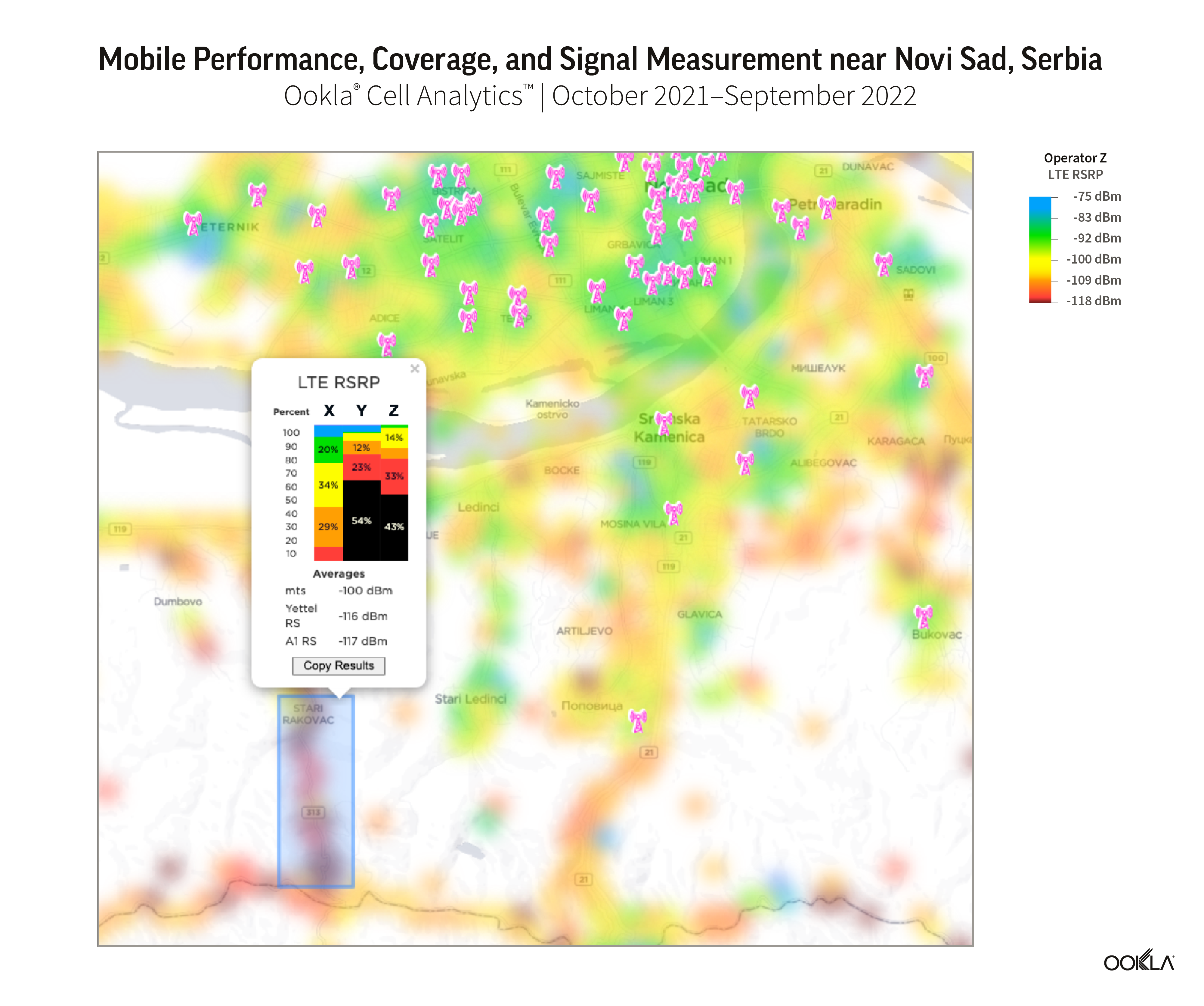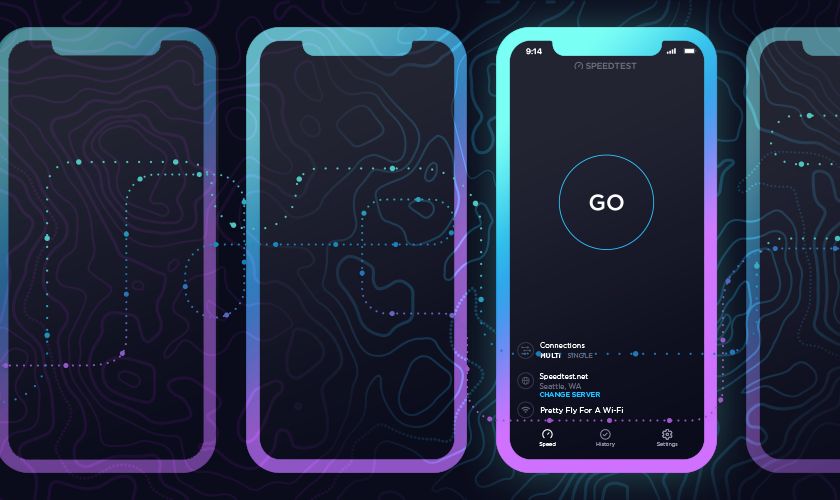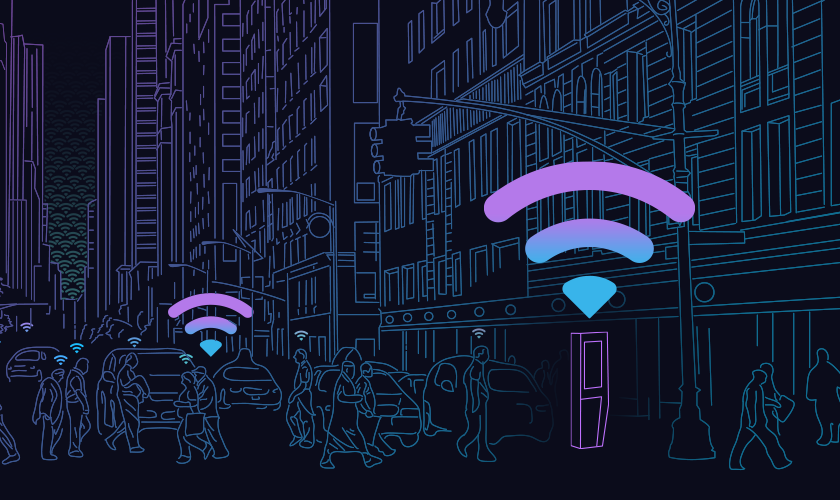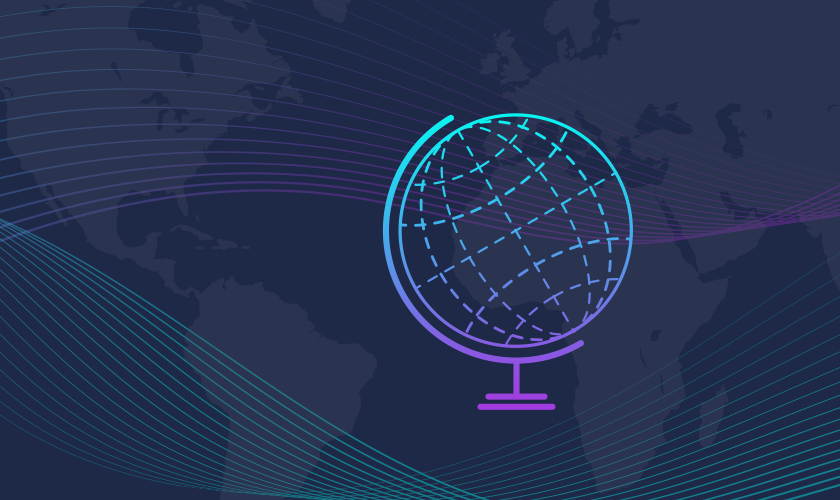
 Speedtest Global Index™ Market Analyses from Ookla® identify key data about internet performance in countries across the world. This quarter we’ve provided updated analyses for 21 markets about top mobile and fixed broadband providers as well as device and chipset manufacturers and some city-level data. Click a country in this list to see highlights or scroll through the article to learn about all 21 markets:
Speedtest Global Index™ Market Analyses from Ookla® identify key data about internet performance in countries across the world. This quarter we’ve provided updated analyses for 21 markets about top mobile and fixed broadband providers as well as device and chipset manufacturers and some city-level data. Click a country in this list to see highlights or scroll through the article to learn about all 21 markets:
Algeria
- Mobile provider Ooredoo attained the best Speed Score™ and Consistency Score™ in Algeria during Q1 2021.
- DJEZZY had the best 4G Availability in Algeria.
- Devices from Apple provided the fastest mean download speeds in Algeria during Q1 2021 with 20.86 Mbps, 47.1% faster than Samsung.
Austria
- A1 was the fastest mobile operator in Austria with a Speed Score of 66.21 while yesss! ranked second at 58.60.
- yesss! edged out A1 for Consistency Score, earning a 93.8% to A1’s 93.5%.
- Magenta blazed ahead of the competition with the fastest fixed broadband Speed Score of 123.45 and highest Consistency Score with 85.8%.
Belgium
- Speedtest Intelligence® shows that Telenet had the fastest fixed broadband in Belgium during Q1 2021 with a Speed Score of 97.13, and it had the fastest Speed Score on mobile at 69.74.
- Telenet also had the best fixed broadband Consistency Score with 87.9%, while BASE had the best mobile Consistency Score with 92.9%.
- Ghent edged out Antwerp for Belgium’s fastest median download speed over mobile and fixed broadband.
Canada
- In Q1 2021, Shaw was the fastest fixed broadband provider in Canada with a Speed Score of 164.40, edging out Rogers.
- The fastest mobile provider was TELUS with a Speed Score of 87.54. Videotron had the highest mobile Consistency Score at 91.3%.
- TELUS and Bell Canada tied for the lowest median latency for fixed broadband at 6 ms.
- Newfoundland and Labrador had the fastest median fixed broadband speed among Canada’s provinces at 112.64 Mbps.
- Calgary had Canada’s fastest median fixed broadband speed of any major city at 115.40 Mbps.
China
- Speedtest Intelligence shows that China Mobile was the fastest mobile operator in China during Q1 2021 with a Speed Score of 101.62.
- Competition for fastest median 5G performance was high, but China Telecom outpaced other providers with a 316.02 Mbps median download speed. Speedtest® results show that China Mobile’s 5G performance was second fastest with a median download speed of 308.44 Mbps and China Unicom was third.
- Huawei’s P40 5G had the fastest median 5G download speed among the most popular devices in China at 291.77 Mbps. This contributed to Huawei’s top position as the device manufacturer with the fastest median download speed with a combined median download speed of 89.11 Mbps. That was 79.4% faster than the next fastest manufacturer, Apple.
- China Telecom was the fastest fixed broadband provider, achieving a Speed Score of 107.10.
- Tianjin was the Chinese city with the fastest fixed broadband with tests showing median download speeds of 180.61 Mbps, 29.7% faster than the next fastest city, Chengdu.
Denmark
- According to Q1 data from Speedtest Intelligence, YouSee was the fastest mobile operator in Denmark with a Speed Score of 86.40.
- Hiper was the fastest fixed broadband provider in Denmark with a Speed Score of 205.32.
- The iPhone 12 Pro Max 5G was the fastest popular device in Denmark, with a median download speed of 96.90 Mbps.
Finland
- Telia was the fastest fixed broadband provider in Finland during Q1 2021 with a Speed Score of 77.05. Telia was also the most consistent, earning a Consistency Score of 80.3%.
- DNA had the fastest mobile Speed Score (61.73) as well as the highest Consistency Score (93.6%).
- DNA also had the fastest 5G performance with a median download speed of 337.21 Mbps.
Hong Kong (SAR)
- During Q1 2021, China Mobile Hong Kong was the fastest mobile provider in Hong Kong, achieving a Speed Score of 65.16.
- Huawei’s P40 Pro 5G edged out Samsung’s Galaxy S20 Ultra 5G as the fastest popular device in Hong Kong. The P40 Pro 5G achieved a median download speed of 150.67 Mbps, beating the Galaxy 220 Ultra 5G by 1.5 Mbps.
- Samsung had the best combined performance by a major cell phone manufacturer with its devices reaching mean download speeds of 76.41 Mbps.
- Devices using Qualcomm’s Snapdragon 888 5G had the fastest mean download speed of any chipset at 137.76 Mbps. Devices with Hisilicon’s Kirin 990 came in second at 136.52 Mbps.
Hungary
- Magyar Telekom had the fastest mobile Speed Score in Hungary during Q1 2021, as well as the best mobile Consistency Score (90.9%) and highest 4G availability (97.7%).
- DIGI beat out Vodafone as the fastest fixed broadband provider in Hungary by attaining a Speed Score of 138.74 to Vodafone’s 137.06 and UPC’s 134.08.
- Apple devices had the fastest median mobile download speeds among popular manufacturers at 36.59 Mbps.
Kenya
- Safaricom had the fastest Speed Score among mobile providers in Kenya during Q1 2021 at 29.80 as well as the top mobile Consistency Score (86.3%) and highest 4G Availability (88.1%).
- Mombasa had the fastest mean mobile download speed at 27.79 Mbps while Nairobi was the fastest over fixed broadband with a download speed of 22.65 Mbps.
- Faiba had the fastest fixed broadband Speed Score at 22.70 and best Consistency Score at 44.0%.
Luxembourg
- POST was Luxembourg’s fastest mobile operator in Q1 2021 as well as Luxembourg’s most consistent. POST had a Speed Score of 86.31 and a Consistency Score of 95.9%.
- Orange had the best 4G Availability in Luxembourg at 98.7%.
- Apple beat out Samsung as the fastest popular device manufacturer by earning a median download speed of 51.13 Mbps to Samsung’s 46.40 Mbps.
- Tango had the fastest fixed broadband Speed Score at 120.35, while Eltrona had the best fixed broadband Consistency Score with 85.9%.
Malta
- Mobile providers GO and epic were in close competition for the fastest Speed Score in Q1 2021. GO beat out epic by a fraction by scoring 47.82 to epic’s 47.36.
- Apple devices had the fastest mean download speed in Malta among popular manufacturers at 51.31 Mbps.
- Melita had the fastest fixed broadband Speed Score at 118.58 and highest fixed broadband Consistency Score at 84.2%.
Morocco
- Maroc Telecom was the fastest provider for both fixed broadband and mobile in Morocco during Q1 2021. Maroc Telecom achieved the fastest mobile Speed Score (54.32) and the highest mobile Consistency Score (92.0%).
- Maroc Telecom also narrowly beat out inwi for the highest 4G Availability with 91.5% to inwi’s 91.3%.
- Apple devices had the fastest mean download speed in Morocco among popular manufacturers at 50.31 Mbps.
- Casablanca had the fastest fixed broadband speeds, achieving a mean download speed of 25.93 Mbps while Marrakesh had the fastest mean mobile download speed at 38.33 Mbps.
Nigeria
- During Q1 2021, tests showed that Airtel had Nigeria’s fastest mobile Speed Score (27.18) and best mobile Consistency Score (84.7%).
- Port Harcourt had the fastest mean mobile download speed in Nigeria at 23.02 Mbps.
- ipNX was the fastest fixed broadband provider with a Speed Score of 18.00. ipNX also had the best fixed broadband Consistency Score at 36.2%.
Portugal
- Vodafone was the fastest fixed broadband provider in Portugal during Q1 2021 with a Speed Score of 113.75, the lowest mean latency (11 ms) and highest Consistency Score (81.9%).
- MEO was the fastest mobile operator with a Speed Score of 46.92.
- OnePlus had the fastest mean download speed of any popular device manufacturer at 56.93 Mbps.
- Among Portugal’s most populous cities, Vila Nova de Gaia had the fastest mean fixed broadband download speed at 155.61 Mbps, while Braga had the fastest mean mobile download speed at 70.95 Mbps.
Serbia
- During Q1 2021, SBB was Serbia’s fastest fixed broadband provider with a Speed Score of 78.09 and showed the highest Consistency Score of any provider at 81.3%.
- Speedtest Intelligence revealed that Telenor narrowly edged out VIP for the fastest mobile Speed Score at 50.63 to VIP’s 50.47.
- Telenor had the highest mobile Consistency Score with 93.4%. Telenor also delivered the highest 4G Availability in Serbia with 90.3%.
- Devices using Qualcomm’s Snapdragon X55 5G delivered Serbia’s fastest median mobile download speeds at 76.14 Mbps.
Slovakia
- During Q1 2021, UPC beat out Antik for the fastest fixed broadband operator in Slovakia with a Speed Score of 113.17 to Antik’s 110.46.
- Antik had the lowest median fixed broadband latency in the country at 3 ms.
- Orange had the fastest mobile Speed Score in the country with a score of 52.41, followed by Telekom at 49.09.
- Devices using Samsung’s Exynos 2100 chipset achieved the fastest median download speed (70.13 Mbps).
South Africa
- Speedtest Intelligence shows that MTN had the fastest mobile download Speed Score in South Africa during Q1 2021 at 54.38.
- MTN also had the highest 4G Availability in the country with 90.5%.
- Cool Ideas was the fastest fixed broadband provider in South Africa with a Speed Score of 37.80, followed by Afrihost at 31.32 and Webafrica at 30.87.
- Johannesburg had the fastest mean fixed broadband download speed at 53.48 Mbps and the fastest download speed over mobile at 54.64 Mbps.
Taiwan
- According to a Speedtest Intelligence, Chunghwa Telecom was the fastest mobile operator in Taiwan during Q1 2021 with a Speed Score of 71.73.
- FarEasTone had the fastest median download speed on 5G at 361.48 Mbps.
- Sony’s Xperia 1 II 5G achieved the fastest mean download speed among popular devices (181.93 Mbps). Apple devices overall attained the fastest mean mobile download speed among popular manufacturers (82.57 Mbps).
- Taichung had the fastest mean download speed among Taiwan’s most populous cities at 83.35 Mbps. Taipei was second fastest with 80.50 Mbps.
United States
- Speedtest Intelligence revealed that T-Mobile overtook AT&T in Q1 2021 as the fastest mobile operator in the United States, achieving a Speed Score of 50.21 to AT&T’s 48.38.
- T-Mobile also had the fastest 5G performance of any operator, achieving a median download speed of 82.35 Mbps while having the highest 5G time spent in the country at 65.4%.
- OnePlus devices had the fastest mean download speed among popular devices at 50.79 Mbps.
- Qualcomm had all five of the fastest chipsets in the United States. The Snapdragon X55 5G was fastest with a median download speed of 66.63 Mbps, followed by the Snapdragon 888 5G at 64.63 Mbps and the Snapdragon 865 at 56.50 Mbps.
- Verizon was the fastest fixed broadband provider with a Speed Score of 160.07, outperforming Cox and XFINITY, which scored 153.57 and 139.33, respectively.
- Spectrum displayed the most consistent speeds among fixed broadband providers with a Consistency Score of 88.3%.
Verizon had the best median fixed broadband latency at 8 ms, while Cox ranked second (12 ms) and XFINITY third (14 ms).
Vietnam
- Viettel achieved Vietnam’s fastest mobile and fixed broadband during Q1 2021. Viettel showed a Speed Score of 59.76 for fixed broadband and 38.55 for mobile.
- Vinaphone had the best mobile Consistency Score with 91.1%.
- Viettel had the highest 4G Availability with 94.4%.
- Xiaomi’s Mi 10T Pro 5G achieved the fastest mean download speed at 80.17 Mbps and beat out Samsung’s Galaxy Note20 Ultra 5G, which had a median download speed of 59.96 Mbps.
Read the full market analyses and follow monthly ranking updates on the Speedtest Global Index.
The contents of this article are the property of Ookla, LLC and may not be copied, redistributed, published, displayed, performed, modified, exploited or used for commercial purposes, including use in advertisements or other promotional content, without express written permission. This includes, but is not limited to, data, written analysis, images, logos, charts and graphs and other items that may appear on this page. Members of the press, academics, non-profit researchers and others using the findings in this report for non-commercial purposes are welcome to publicly share and link to report information with attribution to Ookla. For more information, please contact press@ookla.com.
Ookla retains ownership of this article including all of the intellectual property rights, data, content graphs and analysis. This article may not be quoted, reproduced, distributed or published for any commercial purpose without prior consent. Members of the press and others using the findings in this article for non-commercial purposes are welcome to publicly share and link to report information with attribution to Ookla.




